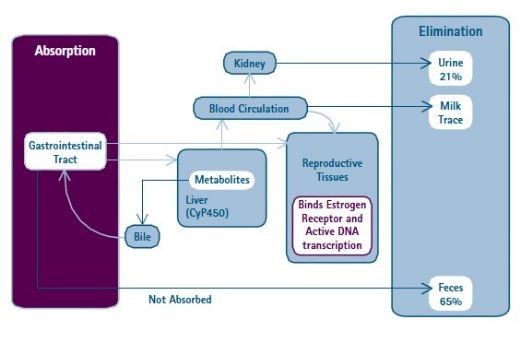Efficiency of Silicoglycidol, as mycotoxin binder (zearalenone) in breeding sows

INTRODUCTION
Zearalenone (Zen) is an oestrogenic mycotoxin produced by Fusarium (fungi) and others.
It causes estrogenic signs in animals (vulvitis, increased size of the uterus) and reproductive problems. Pigs are very sensitive to this mycotoxin.
Zen is metabolized through its reduction to zearalenol (Zol) by a dehydrogenase enzyme. This reduction occurs most actively in liver. Both α-Zol and β-Zol metabolites are excreted as free compounds and as glucuronide conjugates mainly via faeces. Therefore, more adsorbed Zen is correlated with more Zol in faeces.
This fact enables us to establish a relation between the amount of Zearalenone ingested and the Zearalenol excreted in faeces:
- A greater presence of Zol in the feces means that the animal has absorbed more Zen in the intestine.
- A greater presence of Zen in the feces, and less presence of Zol, means that the animal has not absorbed Zen in the intestine, and this is excreted directly in the feces without harming the animal.


OBJECTIVE
The aim of the study was to determine the efficiency of our product binding Zearalenone by analyzing the concentration of zearalenone and zearalenone metabolites in faeces.In an in vivo carried out in USA in 2012 efficiency of Silicoglycidol (patented mycotoxin binder molecule) binding zearalenone was studied, by analyzing the concentration of zearalenone and zearalenone metabolites in faeces.MATERIAL AND METHODSThe trial lasted 14 days and consisted of 3 batches of breeding sows
- Batch 1. Negative control: Feed without mycotoxins.
- Batch 2. Positive control: Feed with 1 ppm of zearalenone, without mycotoxin binder.
- Batch 3. Treatment batch: Feed with 1 ppm of Zearalenone supplemented with Silicoglycidol (Mycotoxin binder)
RESULTS

Batch 1: No contaminated, without binder. Batch 2: contaminated, without binder. Batch 3: contaminated, with binder (Silicoglycidol)Results interpretation:
A greater presence of zearalenone in feces shows that the binder has been bound to the mycotoxin and this has not been absorbed in the digestive tract, so it is excreted in the faeces.
CONCLUSIONS

Photo: Three-dimensional structure of the Silicoglycidol moleculeWith the use of Silicoglycidol it was observed:
1) Greater concentration of Zen in faeces: which correlates with a lower absorption of this mycotoxin, so the binder has prevented it from being absorbed in the digestive tract.
2) Lower Zol in faeces: what is correlated with less Zen absorbed and metabolized in the liver.
In addition, the incidence of vulvitis was reduced by 23% with the use of Silicoglycidol
Silicoglycidol molecule is commercialized in the product Alquerfeed Antitox, from Biovet S.A. Silicoglycidol is a patented molecule, developed from a process by which the structure of natural silicates is modified to create a molecule with a structure that optimizes the adsorption of mycotoxins, which are not desorbed in any of the conditions of the digestive tract, so mycotoxins are expelled with the feces.



